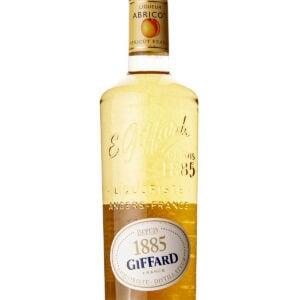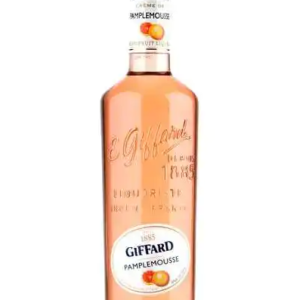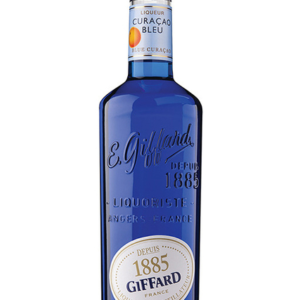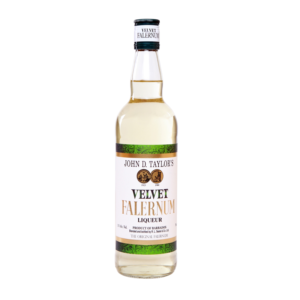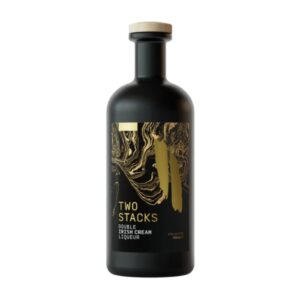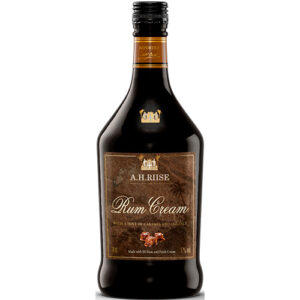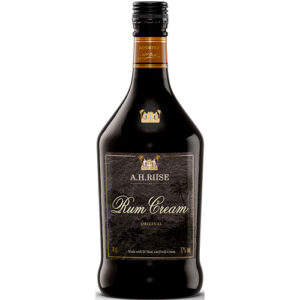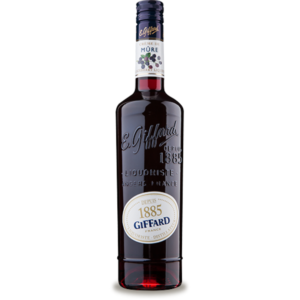Showing all 8 resultsSorted by popularity
Liqueur – The Complete Guide
TL;DR: In Brief
- Liqueurs are characterized by sweetness, lower alcohol content (typically 15-55% ABV), and distinctive flavoring agents
- Primarily made from a base spirit infused with fruits, herbs, spices, flowers, nuts, or cream, and defined by a sweetening process
- Found in several styles, including fruit liqueurs, herbal liqueurs, cream liqueurs, and nut-based liqueurs
- Best enjoyed neat, chilled, over ice, or as key ingredients in classic cocktails like the White Russian or Espresso Martini
Disclaimer: This guide is intended for informational purposes for adults over 18 years of age. Vault of Spirits encourages responsible alcohol consumption.
Introduction to Liqueur
Liqueur has a rich history and fascinating craftsmanship behind it. From its origins in medieval monasteries across Europe to its global popularity today, this spirit category has evolved to become one of the world’s most treasured and versatile.
This guide gives you insight into the production, flavor profiles, and enjoyment of liqueurs, whether you’re a beginner or experienced enthusiast.
With thousands of varieties available worldwide, liqueurs offer an extraordinary spectrum of flavors, from intensely sweet and fruity to complex herbal concoctions with centuries-old secret recipes.
How Did Liqueur Originate?
From Past to Present
The story of liqueurs begins in the Middle Ages, primarily within European monastery walls. Monks created these sweet, flavored spirits initially for medicinal purposes.
The word “liqueur” itself comes from the Latin “liquifacere,” meaning “to dissolve,” referring to the process of dissolving flavors and essences into the base spirit.
Italian monks and alchemists were among the first documented producers, crafting herbal remedies that combined distilled alcohol with local botanicals, honey, and spices.
By the 13th century, these medicinal elixirs had begun to transform into pleasurable drinks, gradually spreading from religious orders to noble households across Europe.
Which Historical Milestones Have Shaped Liqueur?
The Renaissance period marked a significant transition for liqueurs, as they moved from purely medicinal applications to enjoyable indulgences.
Catherine de’ Medici’s marriage to King Henry II of France in 1533 brought Italian liqueur-making traditions to the French court, significantly influencing European drinking culture.
The 17th and 18th centuries saw the commercial production of many liqueurs we still enjoy today, including Grand Marnier (1880), Cointreau (1875), and Chartreuse (commercialized in 1737 based on a 1605 recipe).
The industrial revolution enabled mass production, while improved transportation networks helped spread regional liqueurs globally.
How Has Liqueur Influenced Cultural Traditions?
In many European countries, specific liqueurs became integral to cultural identity and local traditions.
Digestif culture emerged across Europe, with liqueurs served after meals to aid digestion and conclude dining experiences on a sweet note.
Holiday traditions worldwide often feature specific liqueurs – from eggnog with advocaat at Christmas to limoncello in summer Mediterranean celebrations.
Many countries and regions developed signature liqueurs that became points of pride and cultural heritage, such as Irish cream liqueurs, Italian amaretto, and French herbal varieties.
Why Is Liqueur Popular Today?
The cocktail renaissance of the early 21st century dramatically revitalized liqueurs, with bartenders rediscovering classic recipes and creating innovative concoctions.
Modern consumers appreciate liqueurs for their versatility – they can be enjoyed neat, on ice, in coffee, or as key ingredients in countless cocktails.
Craft distillers have embraced liqueur production, creating small-batch, artisanal products with unique flavor profiles and natural ingredients.
Contemporary interest in traditional and authentic products has led to renewed appreciation for historic liqueurs with protected geographical indications.
How Is Liqueur Made?
Which Raw Materials Are Used in Production?
Liqueurs begin with a base spirit, typically neutral in character, allowing the added flavoring agents to shine through.
What distinguishes liqueurs from other spirits is the addition of sweeteners and flavoring agents that define their character and style.
The quality of ingredients directly influences the final product, with premium liqueurs often using natural ingredients rather than artificial flavors.
Primary ingredients:
- Base spirits – Neutral grain spirit, brandy, whiskey, or rum providing the alcoholic foundation
- Sweeteners – Sugar, honey, or other sweetening agents that give liqueurs their characteristic sweetness
- Flavoring agents – Fruits, herbs, spices, nuts, flowers, or cream that provide the distinctive flavor profile
How Does the Fermentation Process Work?
Unlike many spirits, liqueurs don’t typically undergo a direct fermentation process as part of their production.
Instead, liqueurs utilize already-fermented and distilled base spirits as their foundation.
In some fruit liqueurs, partial fermentation of fruit juices may occur before blending with the base spirit.
The base spirits used have already gone through traditional fermentation processes, where yeasts convert sugars into alcohol before distillation.
Which Distillation Techniques Are Used?
Distillation primarily applies to the base spirit production rather than the liqueur itself, which is created through post-distillation processes.
The choice of base spirit and its distillation method significantly impacts the final liqueur’s character.
Common distillation methods:
- Pot distillation – Creates more flavorful base spirits often used in premium fruit liqueurs and some herbal varieties
- Column distillation – Produces neutral spirits ideal for liqueurs where clean flavor delivery is essential
- Vapor infusion – Some herbal liqueurs pass alcohol vapors through botanicals during distillation for subtle flavor extraction
What Is the Significance of Aging?
Unlike whiskey or brandy, most liqueurs don’t rely heavily on extended aging for their character.
However, some premium liqueurs benefit from a resting or marrying period, allowing flavors to integrate harmoniously.
Certain historic liqueurs, particularly herbal varieties like Chartreuse, undergo aging that contributes to their complexity.
Cream liqueurs typically have shorter shelf lives and are meant to be consumed relatively fresh, without aging.
Which Regions Are Known for Liqueur?
Where Are the Best Varieties Produced?
France excels in herbal and fruit liqueurs, with historic products like Chartreuse from Carthusian monks, Cointreau from Angers, and Grand Marnier combining cognac with bitter oranges.
Italy boasts a rich liqueur tradition with amaretto from Saronno, limoncello from the Amalfi Coast, and various amari (bitter liqueurs) like Campari and Aperol.
The Netherlands and Northern Europe are known for sweet, creamy advocates and fruit-forward offerings like Curaçao and cherry liqueurs.
Ireland has made its mark with cream liqueurs, while Mexico contributes coffee liqueurs, and the Caribbean produces excellent rum-based options.
How Do Geography and Climate Affect the Flavor?
Regional botanicals directly influence liqueur flavors – Mediterranean areas produce citrus and herb-based liqueurs while Alpine regions favor roots and herbs that thrive in mountainous terrains.
Climate impacts the growth of ingredients – the intense sunshine of southern Italy yields the vibrant lemons essential for authentic limoncello.
Cultural traditions shape regional preferences for sweetness levels, alcohol content, and flavor intensity.
Historical access to certain ingredients created regional specialties – Caribbean rum liqueurs developed due to local sugar cane production, while Northern European berry liqueurs reflect indigenous fruit availability.
What New Trends Are Seen in Liqueur Production?
Craft distillers are creating small-batch liqueurs with unusual flavor combinations and locally sourced ingredients.
Lower-sugar and “skinny” liqueur alternatives have emerged to meet consumer demand for reduced-calorie options.
Organic and natural liqueurs without artificial colors or flavors have gained popularity among health-conscious consumers.
Cross-cultural influence has spurred innovations like Japanese yuzu liqueurs, Nordic berry infusions, and spirits featuring exotic botanicals from around the world.
What Do the Different Quality Designations Mean?
European liqueurs may carry geographical indications like Protected Designation of Origin (PDO) or Protected Geographical Indication (PGI), guaranteeing authentic production methods and ingredient sourcing.
Crème liqueurs (Crème de Cassis, Crème de Menthe) legally contain higher sugar content (minimum 250g/liter) than standard liqueurs.
Terms like “Reserve,” “VSOP,” or “XO” on certain liqueurs indicate that the base spirits used may have been aged longer.
Different countries have varying legal definitions regarding minimum alcohol content and sugar levels needed to qualify as a liqueur.
How Does Liqueur Taste?
What Characterizes the Typical Flavor Profile?
Sweetness is the defining characteristic of all liqueurs, though the level varies widely across styles.
Mouthfeel tends to be viscous and syrupy compared to non-sweetened spirits.
Alcohol content typically ranges from 15% to 55% ABV, generally lower than straight spirits.
Typical aromas:
- Fruit profiles – Fresh or cooked fruits, citrus zest, berry compotes, or tropical notes
- Herbal notes – From delicate floral hints to intense medicinal herbs, anise, or menthol
- Sweet elements – Honey, caramel, vanilla, chocolate, cream, or nut-based sweetness
How Does the Flavor Vary Between Different Styles?
Fruit liqueurs showcase the essence of their source fruit – from bright, tangy citrus liqueurs to rich, jammy berry varieties.
Herbal liqueurs range from gentle and floral (like elderflower) to intensely complex and sometimes bitter (like Chartreuse with its 130 herbs).
Cream liqueurs offer velvety textures and dairy richness, often complemented by flavors like chocolate, coffee, or caramel.
Nut liqueurs present warm, toasty profiles with varying sweetness levels – from the marzipan notes of amaretto to the hazelnut intensity of Frangelico.
How Does the Flavor Develop with Age?
Most liqueurs are not designed to age in the bottle and should be consumed within a few years of production.
Fruit liqueurs may lose brightness over time, while cream liqueurs can separate or spoil if kept too long.
Some herbal liqueurs with higher alcohol content can maintain their quality longer and may even develop additional complexity.
Exposure to light, heat, and oxygen accelerates flavor degradation in most liqueurs, regardless of style.
What Signs Reveal High Quality?
Premium liqueurs showcase genuine, vibrant flavors that reflect their source ingredients rather than artificial approximations.
Balance is crucial – high-quality products maintain harmony between sweetness, alcohol, and flavor intensity.
Complexity and depth of flavor, with discernible layers that evolve on the palate, indicate craftsmanship.
Smooth, silky textures without cloying stickiness or harsh alcohol burn are marks of excellence.
How Is Liqueur Best Enjoyed?
What Is the Optimal Serving Method?
Many liqueurs shine when served neat in small portions (30-60ml) as after-dinner digestifs.
Chilling certain liqueurs, particularly fruit and cream varieties, can enhance their enjoyment and texture.
Serving over ice works well for lower-alcohol liqueurs and can soften intense sweetness.
As cocktail ingredients, liqueurs bring sweetness, flavor complexity, and often color to mixed drinks.
Which Glass and Temperature Are Ideal?
Small cordial or liqueur glasses (30-60ml capacity) are traditional for neat servings, concentrating aromas.
Serve herbal and nut liqueurs at cool room temperature (16-18°C) to maximize aroma development.
Chill fruit liqueurs to 7-10°C to enhance their refreshing qualities without freezing flavor molecules.
Cream liqueurs benefit from being served cold (4-7°C) to highlight their silky texture.
How Do You Taste Like an Expert?
Begin by assessing the liqueur’s appearance – noting color intensity, clarity, and viscosity as you swirl the glass.
Nose the liqueur gently, as the high sugar content can intensify alcohol vapors. Note primary aromas and how they evolve with air exposure.
Sip in small amounts, letting the liqueur coat your entire palate. Pay attention to the progression from initial sweetness to middle flavor notes and finish.
Consider balance, intensity, complexity, and authenticity of flavors when evaluating quality.
Which Dishes Complement Liqueur?
Fruit liqueurs pair beautifully with simple desserts like vanilla ice cream, fresh fruit, or light pastries.
Herbal varieties often complement cheese courses, particularly with aged cheeses that match their complexity.
Coffee or chocolate liqueurs naturally enhance coffee-based desserts, chocolate cakes, or tiramisu.
Cream liqueurs work wonderfully with or within desserts featuring complementary flavors like chocolate, caramel, or coffee.
Which Cocktails Can Be Made with Liqueur?
Which Classic Cocktails Should You Know?
White Russian
- Ingredients: 45ml vodka, 30ml coffee liqueur, 30ml cream
- Preparation: Build in a rocks glass with ice, layering cream on top
- History: Gained massive popularity after appearing in the 1998 film “The Big Lebowski”
Margarita
- Ingredients: 50ml tequila, 20ml orange liqueur, 20ml fresh lime juice
- Preparation: Shake with ice, strain into a salt-rimmed glass
- History: Origin disputed but became widely popular in the 1940s and 1950s
Which Modern Cocktails Are Worth Trying?
Espresso Martini combines vodka, coffee liqueur, and fresh espresso for a sophisticated pick-me-up that balances bitterness with sweet liqueur.
The Pornstar Martini features vanilla vodka, passion fruit liqueur, and fresh passion fruit, typically accompanied by a champagne sidecar.
The Elder-Fashioned updates the classic Old Fashioned by incorporating St. Germain elderflower liqueur with bourbon and bitters.
Breakfast Martini mixes gin with orange liqueur and orange marmalade for a sophisticated morning cocktail created by bartender Salvatore Calabrese.
How Is Liqueur Enjoyed Neat?
As a digestif, sipped slowly after meals to aid digestion and provide a sweet conclusion to dining.
Over ice in a rocks glass, particularly refreshing for fruit liqueurs in warmer weather.
Added to hot coffee or hot chocolate for warming winter treats.
In small chilled shots, especially popular for celebrations with herbal varieties like Jägermeister.
Which Homemade Varieties Can You Experiment With?
Fruit-infused liqueurs are relatively simple to make by combining fresh fruits with neutral spirits and sugar, then allowing time for flavor extraction.
Homemade coffee liqueur requires only good quality coffee beans, vanilla, sugar, and a neutral spirit base.
Cream liqueurs can be created with heavy cream, sweetened condensed milk, spirit base, and flavorings like chocolate or vanilla.
Herb and spice infusions offer endless experimentation possibilities with ingredients like cinnamon, star anise, cardamom, or fresh herbs.
What Should You Know Before Buying Liqueur?
Which Details Should You Pay Attention to When Buying?
Check alcohol content (ABV) – lower percentages (15-25%) are common in cream and fruit varieties, while herbal liqueurs often range higher (30-55%).
Look for natural ingredients on the label rather than artificial flavors for better quality products.
For historically significant liqueurs, verify authenticity through proper labeling of protected geographical indications.
Consider bottle size – liqueurs are often used in small quantities, so smaller bottles may prevent waste unless you’re a frequent user.
What Do You Get for Your Money in Different Price Ranges?
Entry-level ($15-25) – Generally reliable for cocktail mixing but may use more artificial flavoring agents.
Mid-range ($25-40) – Better quality ingredients, more authentic flavors, and improved production methods.
Premium ($40-75) – Typically all-natural ingredients, complex flavor profiles, and often traditional production methods.
Ultra-premium ($75+) – May feature rare ingredients, historical recipes, extended aging, or limited production runs.
How Is Liqueur Properly Stored?
Most liqueurs should be stored upright in a cool, dark place away from direct sunlight and heat sources.
Once opened, cream liqueurs require refrigeration and consumption within 6-12 months.
Fruit, herbal, and nut liqueurs typically last 1-2 years after opening when properly stored.
Higher proof and sugar content generally correlate with better preservation qualities.
Is Liqueur a Good Investment?
Unlike whiskey or wine, most liqueurs are not considered investment items as they don’t improve with bottle aging.
Exceptions include extremely limited editions, discontinued products, or historic bottlings of renowned brands like Chartreuse.
Some vintage bottles of liqueurs with cultural significance have developed collector value, particularly those with changed recipes or packaging.
The primary value of liqueurs lies in their enjoyment rather than financial appreciation.
Which Brands Do We Recommend?
What’s Best for Beginners?
Cointreau offers a balanced orange liqueur that works beautifully in cocktails or neat, with clean, natural flavor.
Baileys Irish Cream provides a gentle introduction to cream liqueurs with its approachable vanilla and chocolate notes.
St-Germain Elderflower Liqueur features delicate floral flavors that blend effortlessly in simple cocktails or with sparkling wine.
Disaronno Amaretto presents accessible almond-like sweetness that appeals to most palates, whether in coffee, over ice, or in mixed drinks.
What Will Impress Enthusiasts?
Green or Yellow Chartreuse showcases extraordinary complexity with its secret blend of 130 herbs and plants, beloved by spirits connoisseurs.
Pierre Ferrand Dry Curaçao offers a sophisticated orange liqueur based on cognac with subtle bitter notes and authentic depth.
Luxardo Maraschino represents the historic benchmark for cherry liqueur with its distinctive funky, slightly bitter cherry notes.
Mr. Black Cold Brew Coffee Liqueur impresses coffee enthusiasts with its craft approach and genuine coffee intensity.
Which Bottles Are Most Sought After?
Vintage bottlings of Green Chartreuse, particularly those from before recipe adjustments, command high prices among collectors.
Limited edition seasonal releases from artisanal producers like St. George Spirits or Clear Creek Distillery.
Historic products with cultural significance like pre-revolution Cuban liqueurs or pre-WWII European bottles.
Extremely rare monastery-produced liqueurs with limited distribution outside their regions of origin.
Where Do You Get the Most for Your Money?
Cointreau offers excellent value compared to triple sec alternatives, delivering superior flavor at a reasonable premium price point.
Luxardo products consistently provide authentic, high-quality flavors that justify their mid-range prices.
Giffard liqueurs from France deliver professional-quality fruit expressions at accessible price points.
Leopold Bros. American liqueurs represent excellent value in the craft category, with natural ingredients and traditional methods.
Frequently Asked Questions
What Is Liqueur?
Liqueur is a sweetened alcoholic beverage made by flavoring a distilled spirit with fruits, herbs, spices, flowers, nuts, or cream, and adding sugar or other sweeteners.
They typically range from 15% to 55% alcohol by volume and are characterized by their sweetness and distinctive flavoring agents.
Unlike most other spirits, liqueurs are defined more by their flavoring and sweetening process than by their distillation method.
How Is Liqueur Produced?
Production begins with a base spirit (often neutral) that serves as the alcoholic foundation.
Flavoring agents are introduced through methods like maceration (soaking ingredients in the spirit), percolation (passing spirit through ingredients), distillation with botanicals, or essential oil infusion.
Sugar or other sweeteners are added, and the liqueur may be filtered, colored, and sometimes aged before bottling.
What Characterizes Liqueur?
The defining characteristics of liqueur include noticeable sweetness, lower alcohol content than straight spirits, and prominent flavoring elements.
Liqueurs often have a syrupy consistency and smooth mouthfeel due to their sugar content.
They’re typically consumed in smaller servings than other spirits and are often employed as flavor modifiers in cocktails.
Where Can You Buy Liqueur?
Liqueurs are widely available at liquor stores, wine shops, and many supermarkets where alcohol sales are permitted.
Online retailers offer extensive selections, though shipping regulations vary by location.
Specialty retailers and food importers often carry unique or regional liqueurs not found in mainstream stores.
For rare or collector bottles, auction houses and specialty spirits shops may be the best sources.
